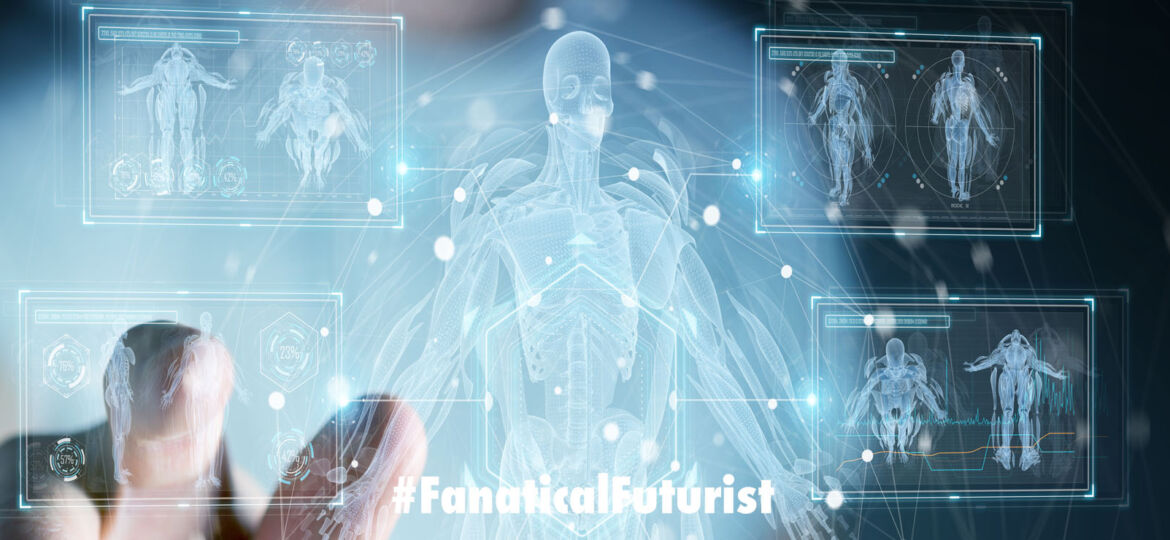
WHY THIS MATTERS IN BRIEF
The cellular and genetic make up of our bodies influence what illnesses we get and how ill we get, so better understanding it will help us create better cure-alls.
 Love the Exponential Future? Join our XPotential Community, enjoy exclusive content, future proof yourself with XPotential University, connect, watch a keynote, or browse my blog.
Love the Exponential Future? Join our XPotential Community, enjoy exclusive content, future proof yourself with XPotential University, connect, watch a keynote, or browse my blog.
A while ago I talked about a project called the Cell Atlas where the researchers involved were trying to make a map of the 35 trillion or so cells in the human body in order to help doctors and scientists develop new treatments for diseases, and even end disease by the date 2115, by giving them a common baseline of the human body to work from.
Now, years later, researchers from the University of New South Wales (UNSW) in Australia have unveiled a map world first that lets you explore the human body down to the level of a individual cells – much in the same way that you can use satellite imagery of Earth to zoom in on any terrestrial feature you want to explore. As you can see for yourself some of the results it produces are awesome – almost as awesome as the tech that let people create HD videos of the cells in their own bodies in vivid 3D that I showed off a while ago. And which, admittedly, is also kinda freaky as we continue to push the boundaries of exploring and recording the human body in action.
Google maps for the human Body
The zoomable tool uses Google Maps’ algorithms to take you on a close-up tour of the structures that make us who we are, and the innovation will help researchers and doctors to better understand and treat disease.
“For the first time we have the ability to go from the whole body down to how the cells are getting their nutrition and how this is all connected,” said Melissa Knothe Tate, a biomedical engineer from UNSW Engineering who is leading the project, in a press release. “This could open the door to as yet unknown new therapies and preventions.”
Announcing the project at the Orthopaedic Research Society meeting in Las Vegas earlier this week, Knothe Tate explained that she’s currently using the technology to research osteoarthritis – one of the leading causes of disability in the elderly.
The map allows her team to do research that previously would have taken 25 years in the space of just a few weeks, and allows them to see how the different tissues and cells of the hip work together in their natural environment to create a healthy joint.
You can explore their map of the human hip here. And is it just me, or does the hip joint look a lot like the surface of an extra-terrestrial planet?
The “Google Maps for the body,” as the tool is being called, is based on an advanced electron microscope technique originally developed by German optical and industrial measurement manufacturing company, Zeiss, to help them inspect silicon wafers. To obtain the data on the hip joint, the team also partnered with the US based Cleveland Clinic, and Brown and Stanford Universities, and then worked with Google to integrate their algorithms.
“These are terabyte-sized data sets, so the Google maps algorithms are helping us take this tremendous amount of information and use it effectively. They’re the traffic controllers, if you like,” said Knothe Tate in the release.
Already other teams are looking they can use this technology to explore the neural pathways and connections in the brains of mice, and other body parts will quickly follow.
“Advanced research instrumentation provides a technological platform to answer the hardest, unanswered questions in science, opening up avenues for fundamental discoveries, the implications of which may be currently unfathomable yet which will ultimately pave the way to engineer better human health and quality of life as we age,” said Knothe Tate.
Even though the research potential of the technology is huge it’s hard to believe that elsewhere people aren’t going to be able to resist the temptation to zoom through the human eyeball or take a tour down into the stomach in much the same way you tour a city like New York using Google Maps. The future is going to be weirdly awesome.















